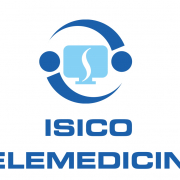Patients with Adolescent Idiopathic Scoliosis Have Higher Metabolic Cost during High-Intensity Interval Training
Every year, the Italian Scoliosis Study Group selects the best published papers on conservative spine treatment from the global scientific literature.
Here is the abstract from one of these papers.
Patients with Adolescent Idiopathic Scoliosis Have Higher Metabolic Cost during High-Intensity Interval Training
Rufina Wing-Lum Lau, Rachel Lai-Chu Kwan, Jack Chun-Yiu Cheng, Stanley Sai-Chuen Hui, Tsz-Ping Lam
Int J Eviron Res Public Health 2023 Jan 25;20(3):2155. doi: 10.3390/ijerph20032155
Abstract
Background: Patients with adolescent idiopathic scoliosis (AIS) are found to have a lower level of physical activity, and may have reduced exercise capacity due to spinal deformity. Previous study showed the benefits of high-intensity interval training (HIIT), named E-Fit, which is specifically designed for patients with AIS to improve musculoskeletal health and psychological well-being. To optimize the beneficial effects of training, the current study aimed to investigate the appropriate exercise intensity and metabolic demand in patients with AIS when performing E-Fit.
Methods: In all, 22 female subjects, 10 diagnosed with AIS and 12 gender-matched healthy controls, aged between 10 and 16 years, were recruited. Subjects were instructed to perform two trials of a seven min E-Fit. Breath-by-breath gas exchange parameters including oxygen consumption (VO2), heart rate (HR) and the rate of perceived exertion (PRE) were measured during exercise. Demographic data and clinical features of AIS and body composition were obtained. Metabolic demand between AIS and control groups was compared using MANOVA with covariates adjustment.
Results: Patients with AIS had an earlier onset of menarche (p = 0.01), higher visceral adipose tissue (p = 0.04) and percentage body fat (p = 0.03) as compared to controls. Patients with AIS showed a significantly higher adjusted means of VO2 average in both the first (p = 0.014) and second trials (p = 0.011) of E-Fit. The adjusted mean of the highest measured VO2 was higher than healthy controls and reached statistical significance in the second trial (p = 0.004). Both the AIS and control group exercised at a similar percentage of VO2 peak (64.26% vs. 64.60%).
Conclusion: Patients with AIS showed higher oxygen consumption during E-Fit than heathy controls, which might indicate a higher metabolic cost. Patients with AIS could carry out exercise at a moderate exercise intensity similar to that of healthy controls, but special considerations in designing an exercise program, such as frequent rest intervals, would be useful to avoid fatigue among patients with AIS.
Keywords: adolescent idiopathic scoliosis; exercise; high-intensity interval training; metabolic cost; oxygen consumption.




Leave a Reply
Want to join the discussion?Feel free to contribute!